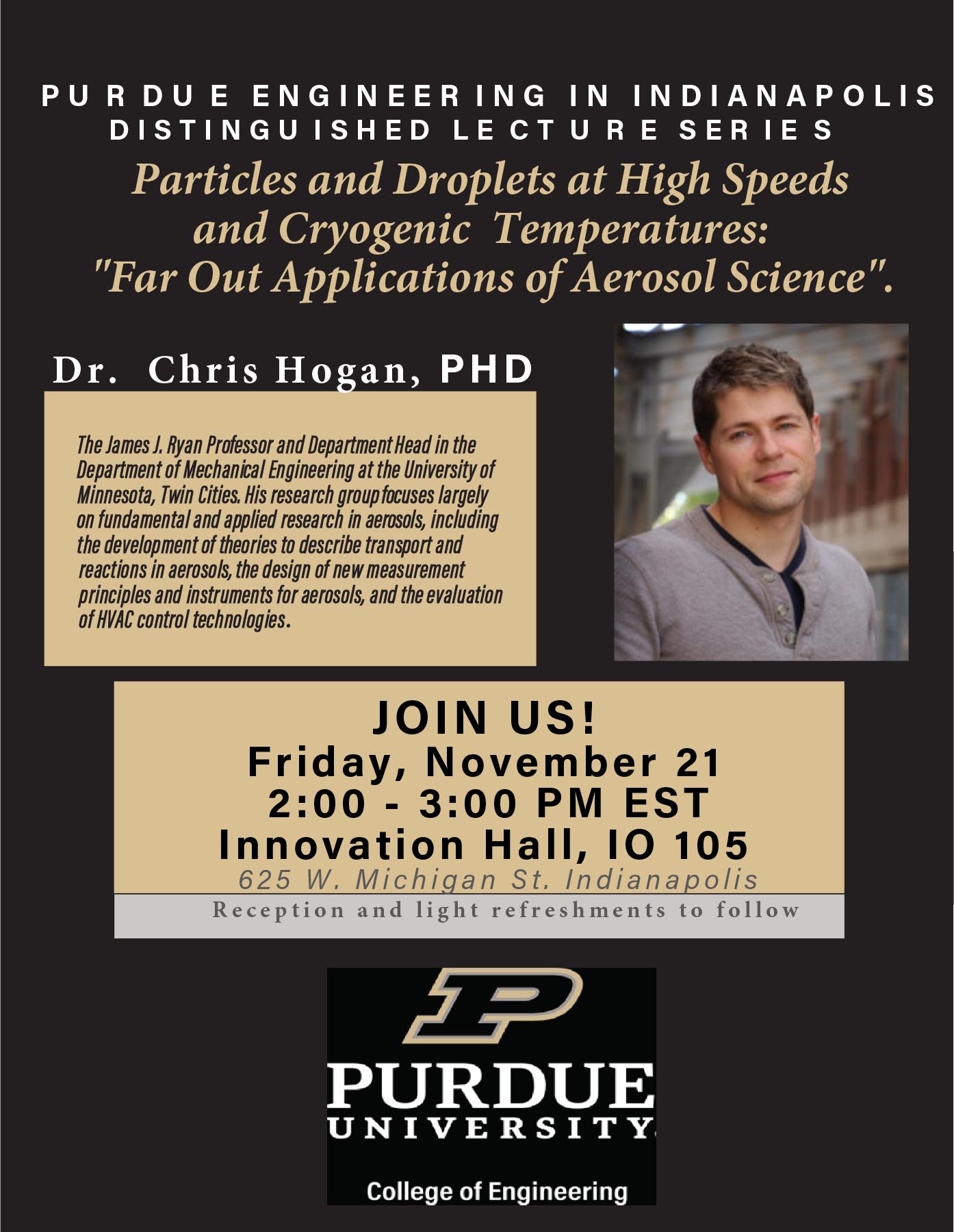Particles and Droplets at High Speeds and Cryogenic Temperatures: Far Out Applications of Aerosol Science
| Event Date: | November 21, 2025 |
|---|---|
| Speaker: | Chris Hogan, University of Minnesota, Twin Cities |
| Time: | 2:00 pm |
| Location: | Innovation Hall, IO 105 |
| Contact Name: | Carlos Larriba-Andaluz |
| Contact Email: | clarriba@purdue.edu |
| Priority: | No |
| College Calendar: | Show |
Particles and Droplets at High Speeds and Cryogenic Temperatures: “Far Out Applications of Aerosol Science”
ABSTRACT: Aerosols, particles and droplets suspended in gases, exhibit behaviors that have no analogue in bulk solids and liquids. This talk will focus on how these behaviors manifest under extreme conditions, and how they can be exploited. First, solid particles can be accelerated to supersonic (Ma > 1) and even hypersonic (Ma > 5) velocities. Using converging–diverging nozzles, we accelerate particles to nearly 1 km s¹. These systems enable: (i) measurements of particle drag across varying Mach and Knudsen numbers; (ii) controlled studies of surface response to high-speed particle impacts, relevant to air- and spacecraft exposures; and (iii) the design of virtual impactors capable of concentrating sub-micrometer particles. Second, particles and droplets in aerosols can be cooled at rates exceeding 10 K min¹. We use this principle to develop aerosol-based cryopreservation systems for biological samples. High cooling rates promote vitrification with minimal ice formation, allowing long-term preservation of cells without cryodamage.
BIO: Chris Hogan is the James J. Ryan Professor and Department Head in the Department of Mechanical Engineering at the University of Minnesota, Twin Cities, where has been a faculty member since 2009. His research group focuses largely on fundamental and applied research in aerosols, including the development of theories to describe transport and reactions in aerosols, the design of new measurement principles and instruments for aerosols, and the evaluation of HVAC control technologies. He has published more than 170 peer reviewed papers focusing in these areas, and is the editor-in-chief of the Journal of Aerosol Science.

